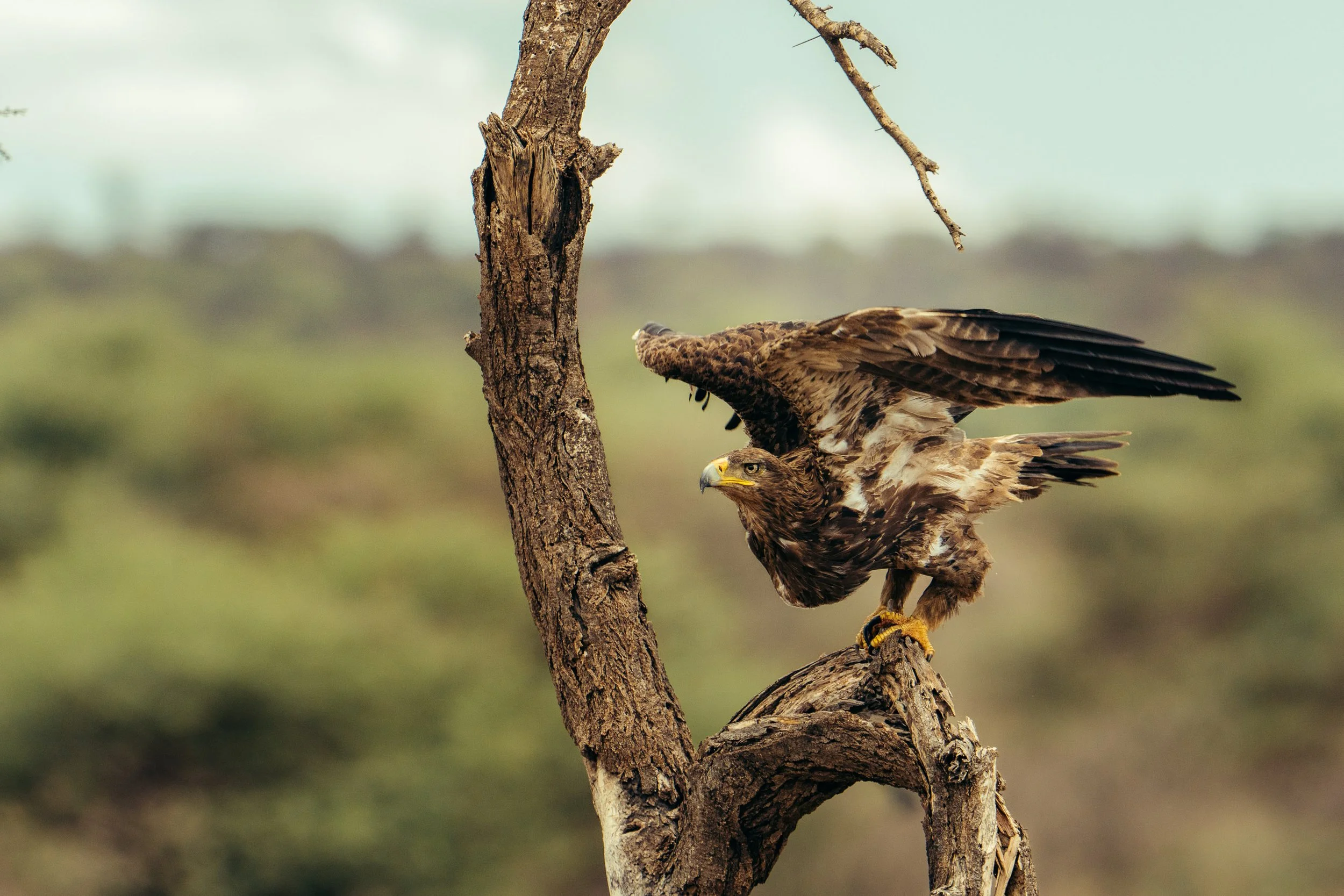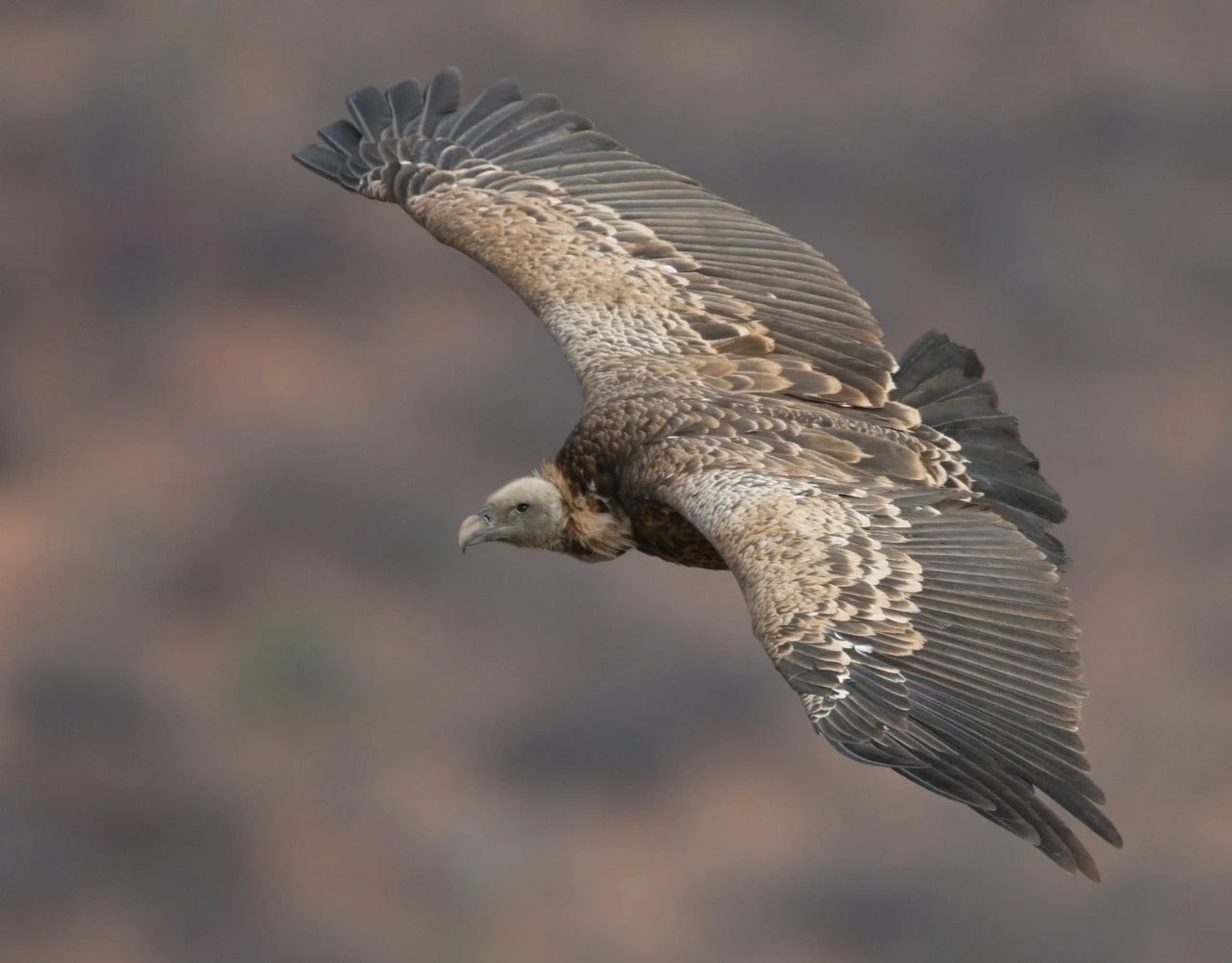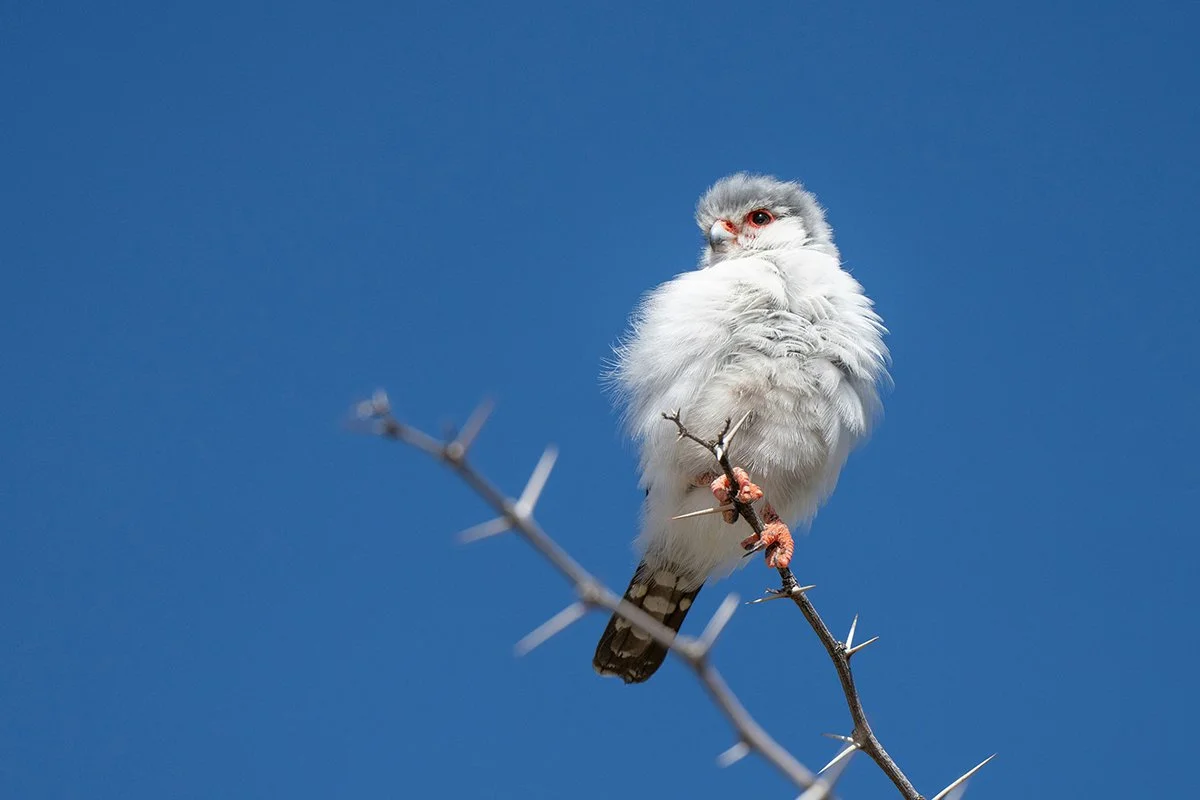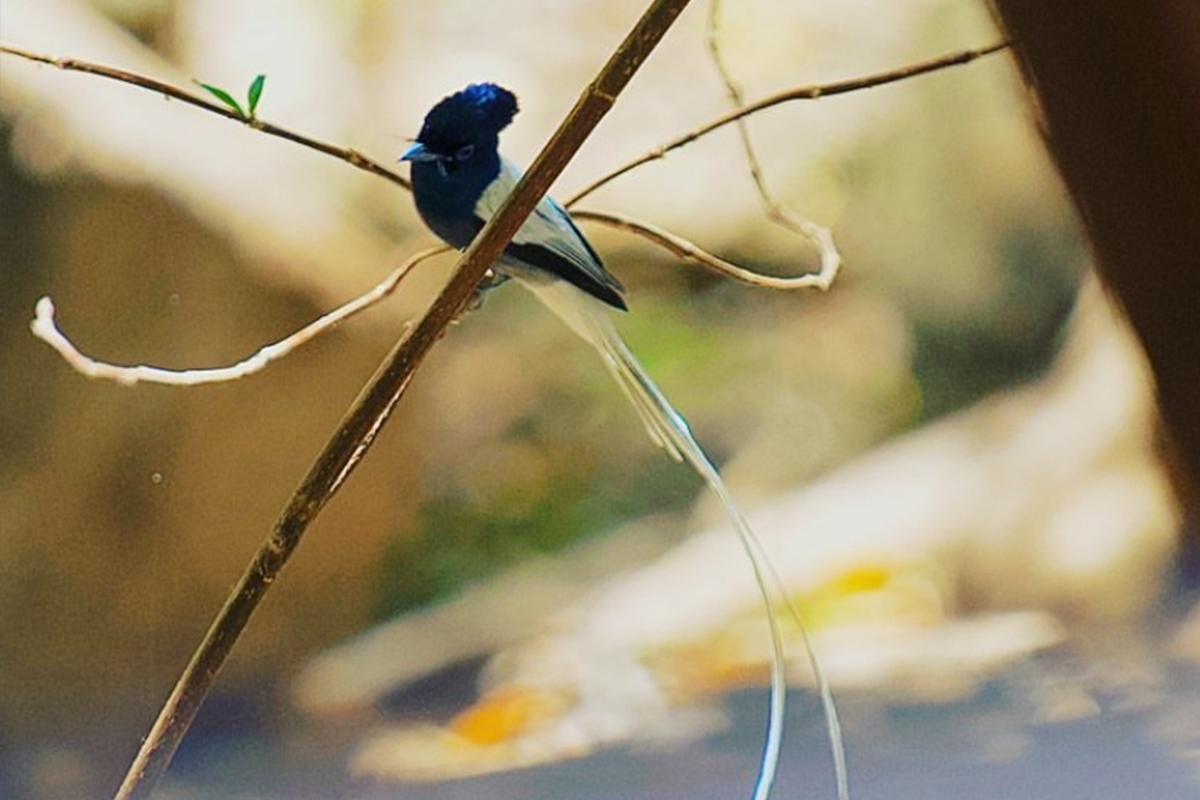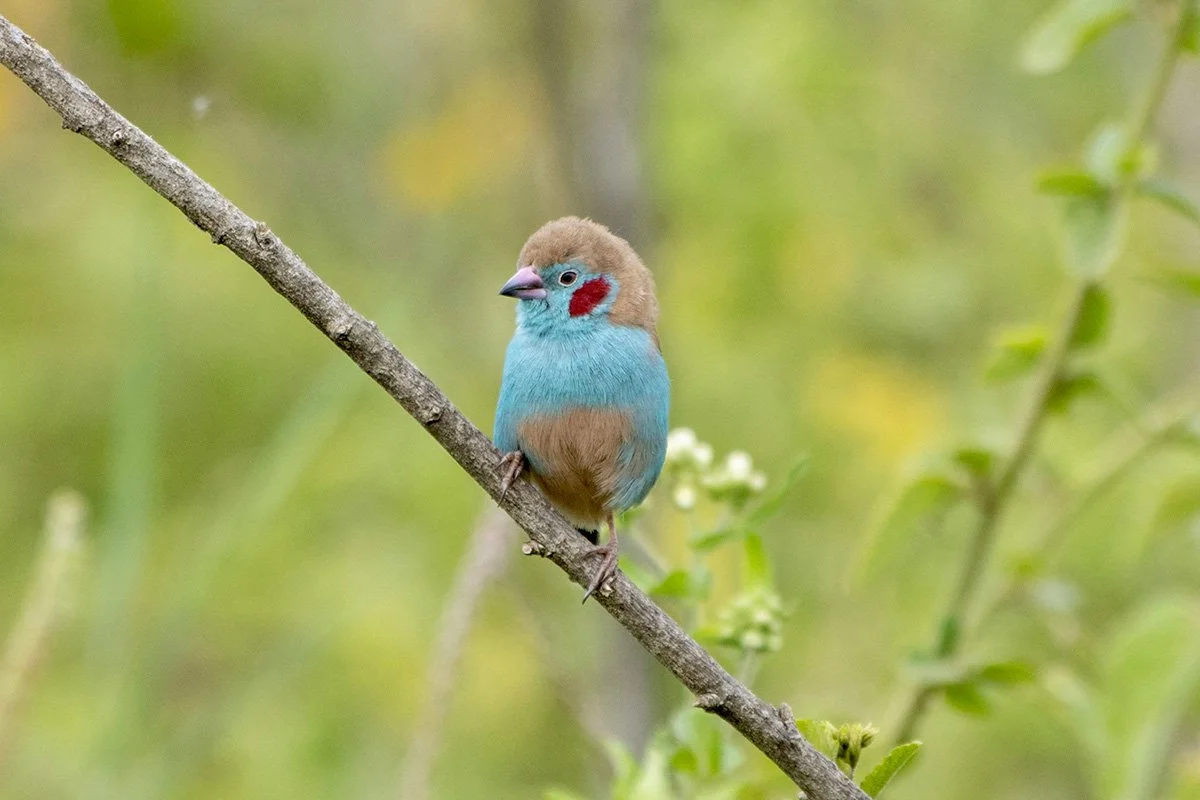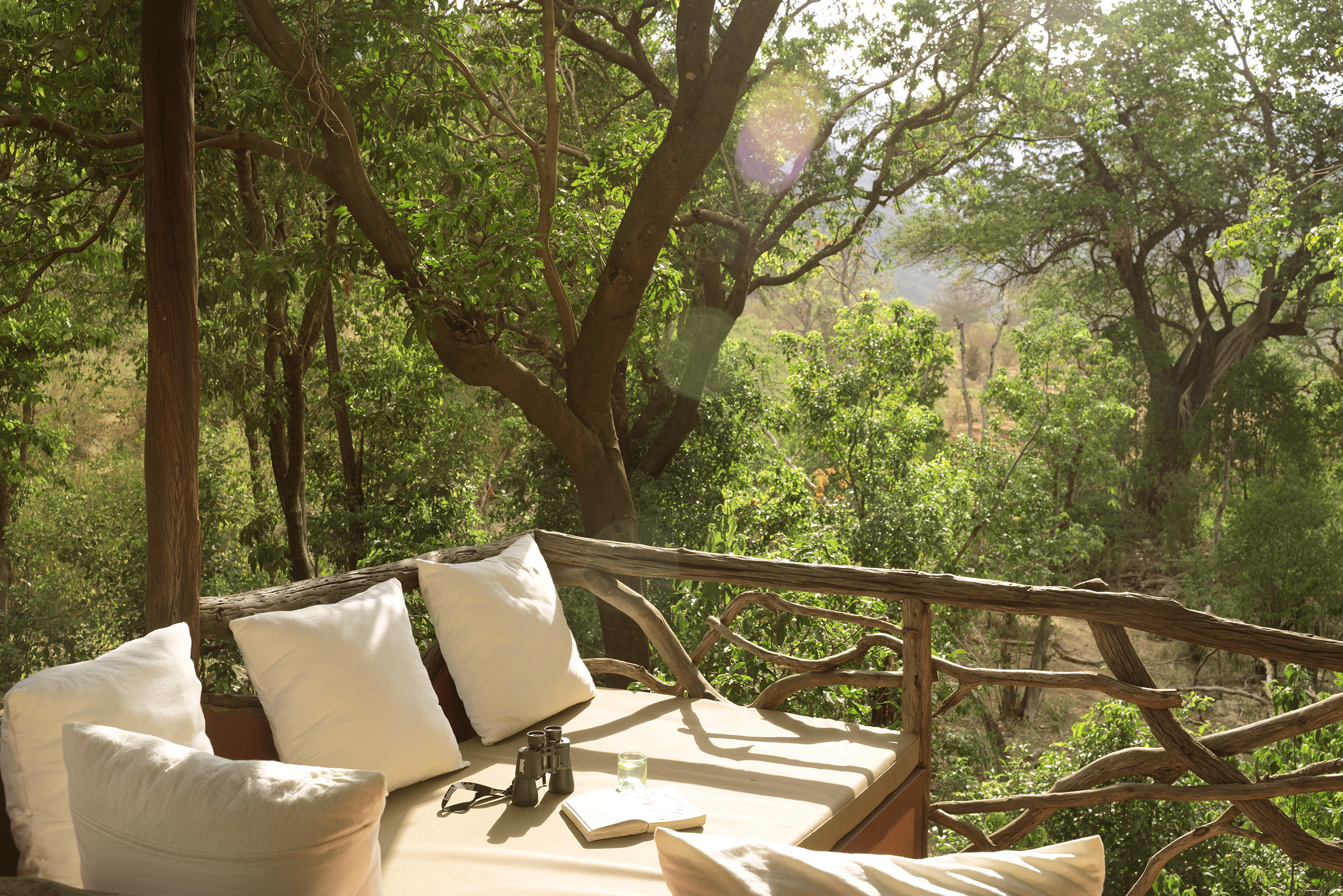Natural highs – in Northern Kenya’s birdwatching paradise
As most avid birdwatchers will tell you, a few essentials – beyond elusive species – top the tick list of their favourite pastime: hours unfolding without haste, wide-open spaces, peace and quiet, and the element of surprise.
Preferably all in abundance.
At Sarara, birdwatching across Namunyak’s 850,000-acre conservancy and the wildlife-rich wider Samburu Ecosystem comes complete with Northern Kenya’s seemingly endless landscapes. So remote that you’re often the only vehicle for miles, it’s easy to lose track of time… Slowing down in step with the rhythms of nature, it’s just you and the sounds of the bush.
With Sarara Guide Pius. Photo by Thige Njuguna.
Hat-trick of “mega eagles”
For those in the know, there’s also the added thrill of a possible hat-trick of three of Africa’s coveted “mega eagles”, with this remote wilderness being one of only a few breeding areas where the African Crowned, Verreaux’s and Martial Eagles occur together.
Enfolded by the Mathews Range and Sarara Valley, Sarara’s three ecolodges are perfectly positioned alongside the preferred hunting grounds of all three – from forests and woodlands favoured by African Crowned Eagles to rocky outcrops sought out by Verreaux’s Eagles, and vast savannas and open woodlands where solitary Martial Eagles glide across the skyline.
Given its proximity to Mount Ol Lolokwe and coveted location in the heart of the game-rich Samburu Ecosystem, Sarara Wilderness is an ideal springboard to see both Martial and Verreaux’s Eagles in flight, says the Manager of this exclusive tented camp, Sammy Lemiruni. He adds that close sightings of Verreaux’s Eagles are rare, as they nest on high, hard-to-reach cliffsides (even by foot) – but not impossible, especially for the adventurous opting for heli-safaris up Mount Ol Lolokwe.
African Crowned Eagle
The most powerful eagle on the continent, with the ability to kill prey four or more times its size. Their short wing and long tail configuration, as well as their strong build enable them to navigate dense forests and kill full-grown monkeys, duikers, dik-diks, mongooses and genets.
Photo by Simon Thomsett
Martial Eagle
As Africa’s largest bird of prey, this eagle’s wingspan can exceed six feet. Martial Eagles are known to hunt small antelope, young warthogs and even lion cubs, though their main diet consists of game birds.
Photo by Simon Thomsett
Verreaux’s Eagle
(also known as the Black or African Black Eagle)
Breeding with one partner for life, pairs often hunt together in cooperative team work. Preying primarily on rock hyraxes, but also on small antelope, they’re in their element in mountainous terrain.
Tawny Eagle. Photo by Thige Njuguna.
Two other eagles deserve special mention: The African Hawk Eagle is one of the strongest of all raptors. Despite being only the size of a large Augur Buzzard, it competes directly with the Martial Eagle for prey. The Tawny Eagle is related more to the Eurasian Imperial Eagles than any other, and no less magnificent. Both reside on the region’s lower well-wooded watercourses.
⚲ MOUNT OL LOLOKWE
One of the world’s densest raptor habitats
Mount Ol Lolokwe is not only one of the highest cliff faces in Africa, but also a highlight for raptophiles. According to the renowned raptor conservationist Simon Thomsett, it has one of the highest densities of raptor species on earth.
“Mt Ol Lolokwe supports the highest number of nesting Rüppell’s Vultures in Kenya, and there are as many as four pairs of Egyptian Vultures, three pairs of Peregrine Falcons, two pairs of Taita Falcons and two pairs of Lanner Falcons on the facets of this massif – which rises nearly 1,000 metres above the semi-arid lands below to the cool cedar forests on top.”
Rüppell’s Vulture
Photo by Laila Bahaa el Din at Mt Ol Lolokwe
Mt Ol Lolokwe
Samburu County, Northern Kenya
Tracing flight paths on tracks and trails
To tilt the odds even more in your favour of seeing elusive raptors, it’s a good idea to lace up your hiking boots. As Simon says: “The opportunity to listen, track and use bush skills in pinning down the alarm calls of Guineafowl to find a Martial or African Hawk Eagle; to hear the sharp warning calls of the hyrax and thus locate a Verreaux’s Eagle; or the cackling calls of vervet monkeys to pick out their main predator, the African Crowned Eagle…can only happen when on foot.”
Sammy adds that you also encounter a greater variety of birds on hikes, “especially the very shy ones like Flycatchers. The region has such unique and diverse habitats, with so many species, and walking deep into the landscape allows you to discover even more.”
Sarara Wilderness. Photo by Stevie Mann
Adding a whole new dimension to Sarara’s birdwatching journey, the recent addition of Sarara Wilderness significantly increases the variety you’ll encounter. Featuring a riverine wonderland alive with weavers, Goliath Herons, Yellow-billed Storks, African Fish Eagles, Malachite Kingfishers, and other water birds, hiking along the lush banks of the spectacular Ewaso Nyiro River is not a suggestion; it’s a must!
Wild wings – from woodlands to plains
A few of our favourite sightings across Sarara’s landscapes
Grey-headed Kingfisher
Despite their name, these bursts of colour are found near water but primarily hunt insects and small lizards. Perching patiently on tree branches, they'd scan the ground for prey and often bob their heads before swooping down for a bite. Though they closely resemble Brown-hooded and Woodland Kingfishers, subtle differences – like a red bill and chestnut belly – set them apart.
Photo by Thige Njuguna
Egyptian Vulture
Once known as the Pharaoh’s chicken for its depiction in hieroglyphs, this small, pale vulture has a bright yellow face and is known for its unique habit of breaking ostrich eggs with stones. Regular guests at Sarara have come to love sightings of the breeding pair near Reteti House, whose continued presence is a testament to the positive impact of conservation efforts.
Photo by Simon Thomsett
Pygmy Falcon
One of the world’s smallest raptors is this perky but very tough miniature falcon. They breed in the thorny nests of the White-headed Buffalo Weaver that they sometimes forcefully usurp. The females have reddish backs and the male are plain grey.
Photo by Etienne Steenkamp
African Paradise Flycatcher
Though they lack the long swoosh of tail feathers of their male counterparts, female paradise flycatchers are no less enchanting. With their striking colours and graceful aerial gymnastics, they’re both a captivating sight – as well as talented songbirds with sweet melodies.
Photo of the White Morph by Philip Leeresh, Manager of Sarara Treehouses
Red-cheeked Cordon-bleu
Rarely seen in the northern parts of Kenya, these small and colourful birds are named for the indulgent red patch on the cheeks of the males (with cordon-blue meaning blue ribbon). Their song has been described as “rhythmic but lazy” – but it’s still nothing to blush about!
Photo by Hongbin
Vulterine Guineafowl
With their bony helmets, cobalt-blue jackets, and high-pitched sounds, these busy bodies almost resemble the police force of the bush. Despite what their name suggests, they aren’t scavengers. As omnivores, they enjoy a varied diet that includes seeds, fruits, insects, and small invertebrates.
Photo by Simon Pocock
African Scops Owl
Although they are masters of disguise with their mottled grey-brown coats, the smallest owls on the continent make a tell-tale monotonous “prrp”-sound. Typically heard on the walkways at Sarara Treehouses at night, it allows you to pinpoint their location.
Photo by Marize van der Laan
White-throated Bee-eater
Breeding in semi-desert and savanna regions during summer, these beauties retreat to Africa’s rainforests in winter. Highly social, they live in colonies made up of multiple families. While both males and females care for their eggs, they make the most of communal living by enlisting up to five helpers to look after their young.
Photo by Thige Njuguna
Let’s do the twitch!
Samburuland is home to almost 700 bird species, ranging from graceful raptors to stately Secretary Birds and Kori Bustards, to smaller gems like the Curlew Sandpiper and elusive Golden Pipit.
And whether you’re a card-carrying ornithologist or a newbie birder, there’s no shortage of delightful names, including Fan-tailed Ravens, Abyssinian Scimitar Bills, White-bellied Go-away Birds, African Woolly-necked Storks, Brown Babblers and White-crested Helmet Shrikes.
Finally, not to ruffle any feathers, but if we have to pick two guest favourites that stand out, it would be Superb Starlings and Bateleur Eagles – both aptly named. Cheekily joining breakfast while putting up a performance, these iridescent blue and green starlings make it impossible to resist their charms. Bateleurs, who tilt from side to side as they soar through the air with minimal flapping of wings, were named after an old French name for tightrope walkers.
Radio Sarara – you’re in for a tweet!
Wake-up calls in Namunyak are a tad different and tend to happen even before your morning coffee arrives. Although the wilderness is delightfully unpredictable, you can expect the following soundtracks – in surround sound – at our lodges and camps:
Sarara Camp: Stone Partridges (“rr-weet, rr-weet, rr-weet”)
Sarara Treehouses: Hornbills (deep booming sound)
Reteti House: Spotted Morning Thrush (repeated rollicking, musical, whistled notes)
Sarara Wilderness: …prepare to be surprised!
We’d like to extend our sincere thanks to Simon Thomsett for his input! His expertise and insights as a renowned raptor conservationist, researcher and contributor added tremendous value to this blog. Simon initiated the Peregrine Fund Programme in Kenya in 1991 and set up the Kenya Bird of Prey Trust in 2015. He’s currently involved with the Soysambu Raptor Centre in Soysambo Conservancy.





